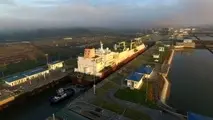Panama Canal Launches Major New Water Management Project to Ensure Adequate Water Supply
The Panama Canal Authority has today published a request for qualifications from prospective contractors for the engineering, design and construction of a major new water management system in order to ensure adequate water supply for the critical waterway.

The Panama Canal Authority has today published a request for qualifications from prospective contractors for the engineering, design and construction of a major new water management system in order to ensure adequate water supply for the critical waterway.
The new project is the biggest investment since the expansion of the Panama Canal, which was completed in 2016.
The implementation of an improved water management system has become a critical priority for the Panama Canal after the waterway experienced its fifth driest year in 70 years in 2019. The unprecedented drought has severely impacted water levels at Gatun and Alhajuela Lakes, the main sources of water for the Canal and half of Panama’s population, thereby threatening the reliability of the critical waterway.
Despite extensive use of water conservation measures already in place, water levels were projected to drop below operational levels that would cause unprecedented an impact on customers, according to the Panama Canal Authority (ACP), the autonomous entity of the Panamanian government that is responsible for the Canal.
Faced with this reality, the ACP in February began charging a “fresh water surcharge” to vessels using the waterway, a charge that experts estimated would cost the shipping industry up to $370 million per year.
This along with other water conservation measures, including reducing the number of available reservation slots, have allowed the Panama Canal to maintain a steady draft in recent months, currently at 49 feet, the highest offered in more than 12 months, according to the ACP.
“Securing sustained, operational water levels is paramount for the long-term viability of the Panama Canal. The historically low levels of water in the recent years only exacerbated the need to adopt a comprehensive plan,” said Panama Canal Administrator Ricaurte Vásquez. “As the Canal’s largest investment since the Expanded Canal in 2016, I am confident this move will safeguard the waterway’s future as one of the most important hubs for global commerce. To achieve this, we are investing in an innovative system to address water quantity, quality and control effectively.”



